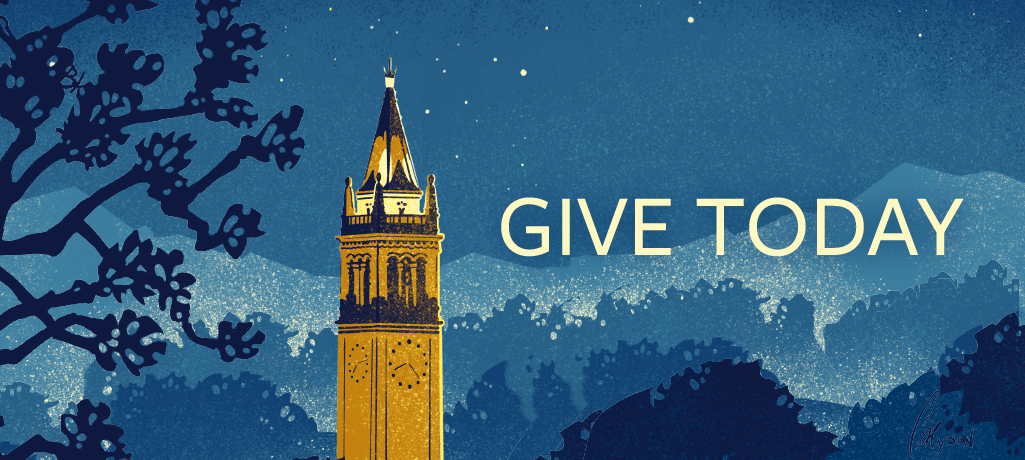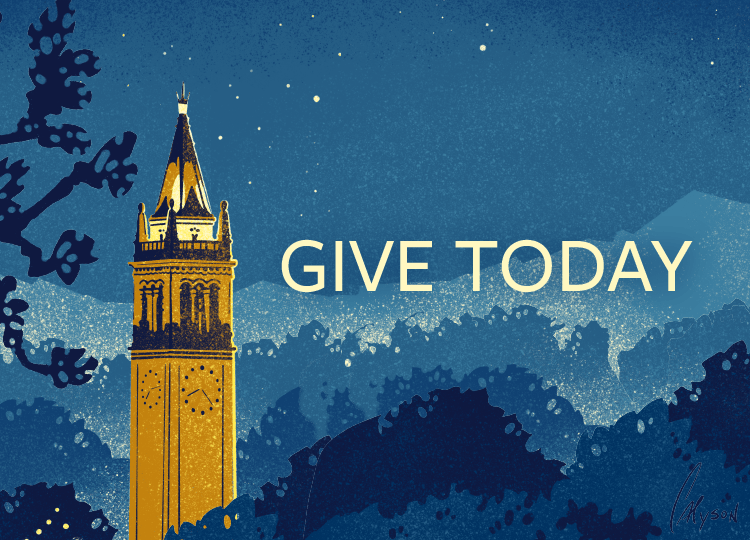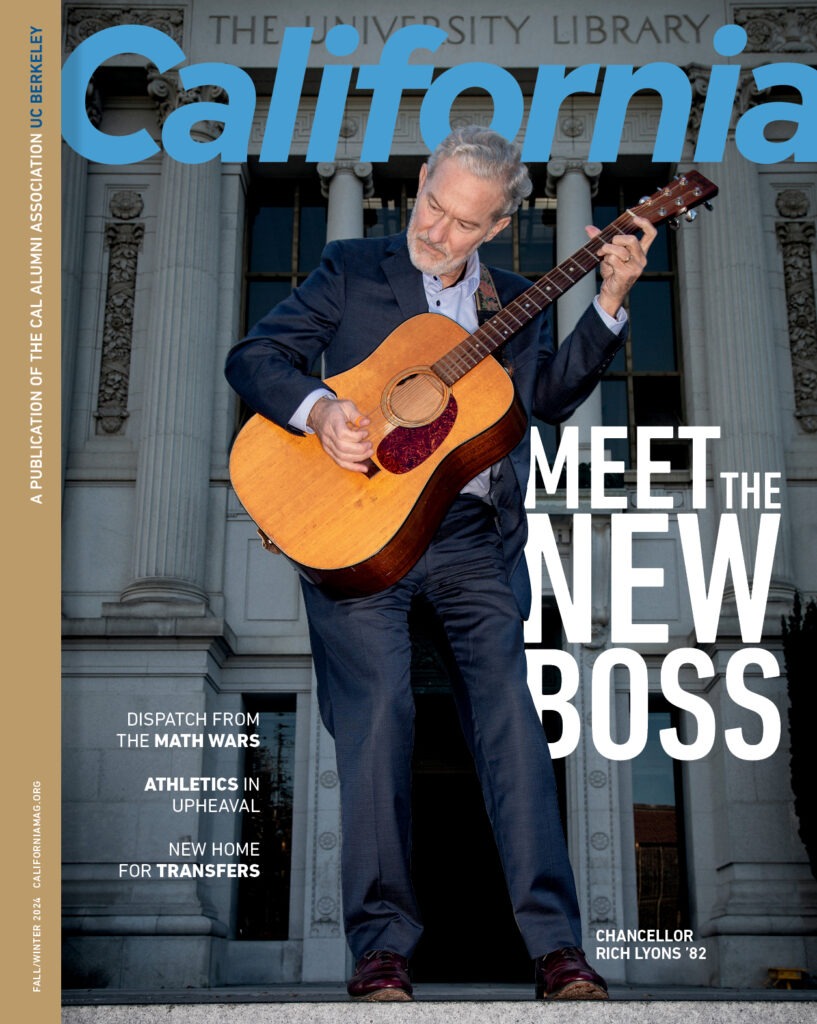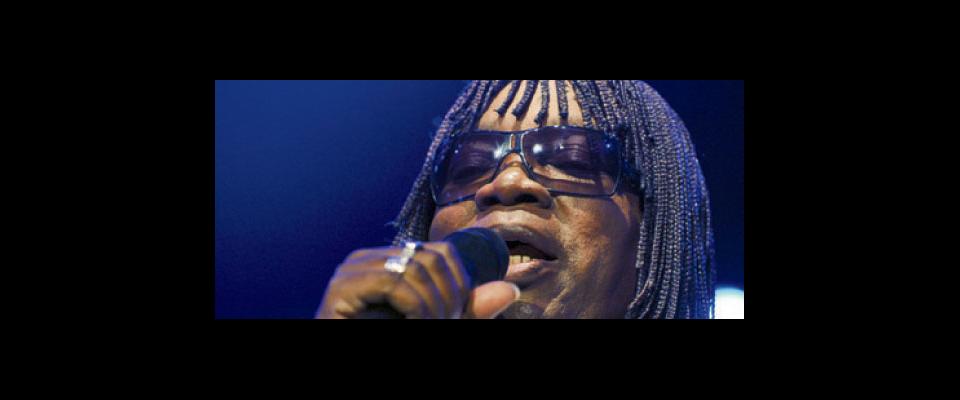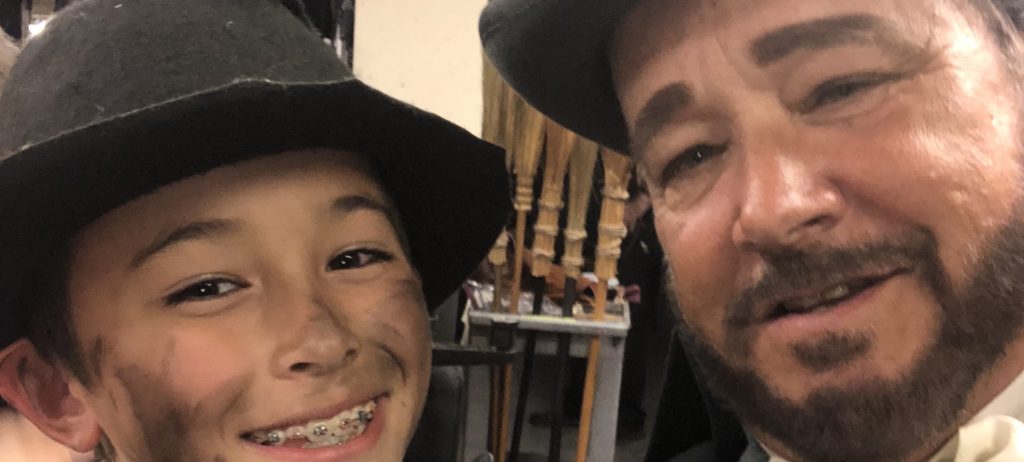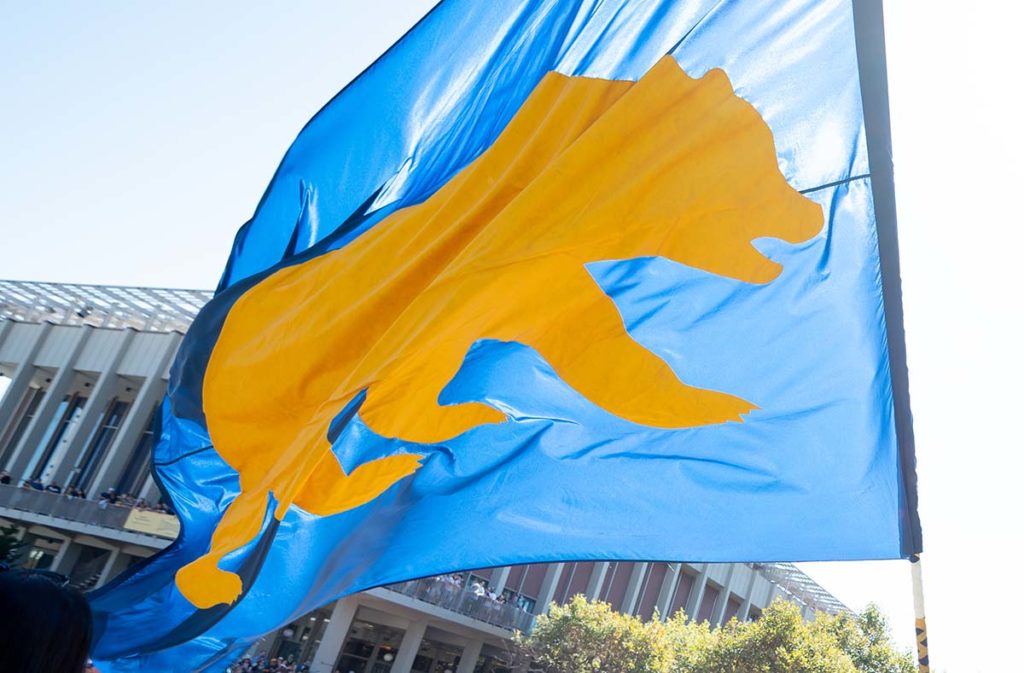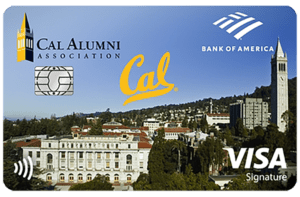The Youngest Officer: A Memoir
By Robert Milton Prestidge ’42 and Susan Prestidge Woodward ’82

The Youngest Officer is the story of Lieutenant Robert Milton Prestidge, a 20-year-old Cal history major turned “90-day wonder”; in the urgency of WWII, Prestidge, like many another young man at that time, was converted from civilian greenhorn to fully commissioned officer in just three months. After he earned his stripes, Prestidge served in the so-called “rust bucket Navy” aboard a dilapidated landing craft that engaged in fierce fighting at South Pacific islands including Leyte, Biak, and Palawan. This account, co-authored by Prestidge’s daughter, Susan Woodward, who complements the narrative with her own ample research, is based primarily on 18 “lost” microcassettes Prestidge recorded many years before his death. The result is an engaging and candid account, not just of naval combat but also of sex and love and death and of what it was like to be young in a time of global warfare, when, as Woodward puts it in her introduction, “ordinary people from all walks came together to save democracy for future generations.”
—P.J.
The Good Whale Podcast
By Serial Productions
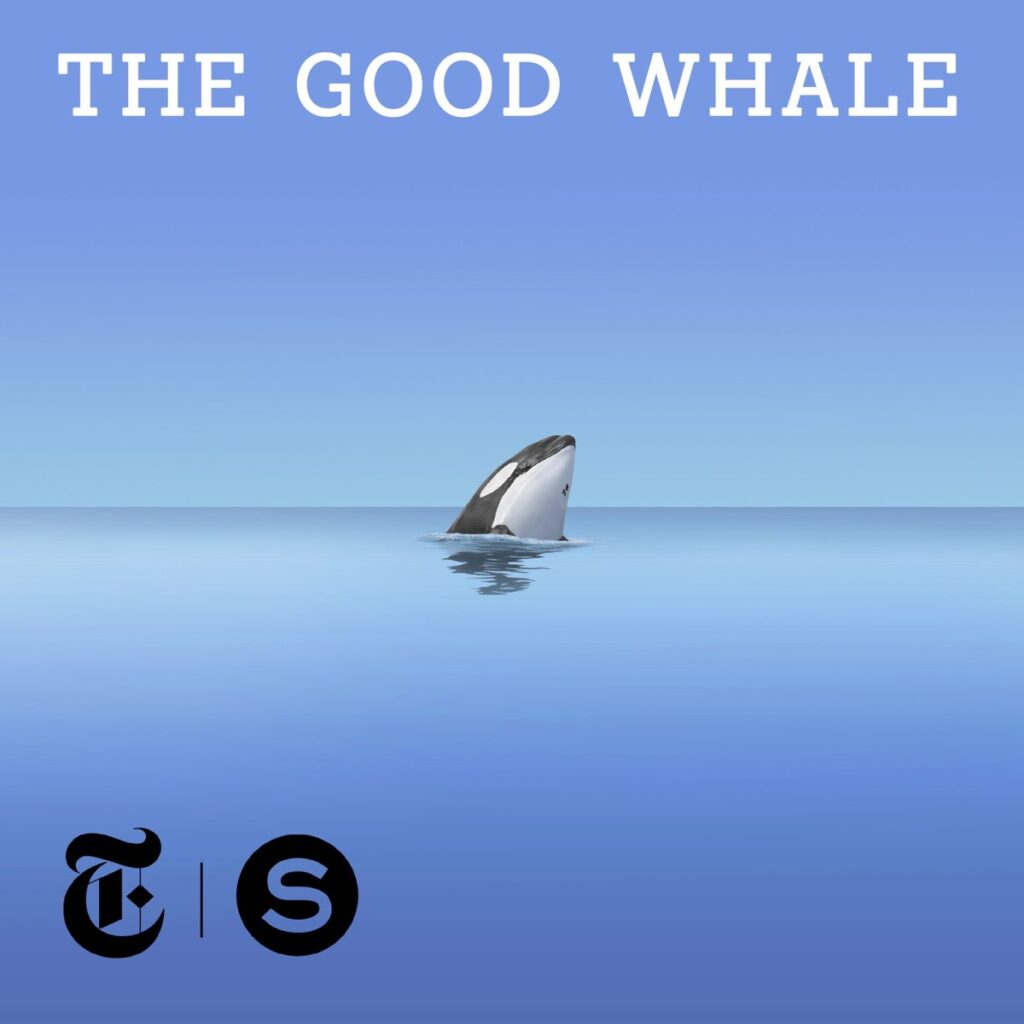
Everyone remembers the end of Free Willy: In a last-ditch bid for freedom, the beloved orca leaps triumphantly over the breakwater and heads off to, presumably, rejoin his kin in the great blue ocean. And that’s that, right?
Not quite. In truth, Keiko—the aquatic star of the blockbuster film—did not swim gleefully into the sunset but, rather, a years-long bureaucratic mess.
The Good Whale, hosted and co-reported by former J-School Investigative Reporting Fellow Daniel Alarcón and produced by Serial and the New York Times, tells the story of what happened to Keiko after his final, er, splash. Like Willy, the real-life whale was captured and sold to an amusement park—but that was just the beginning. When cinema stardom brings a fan-led effort to free him from his small pool in Mexico City, Keiko is strapped inside a cargo plane and launched into, what the podcast calls, “an epic science experiment to try to teach one celebrity orca how to be free—while the world watches.”
At once miraculous and heartbreaking, the six-part series is a gripping, genre-bending tale of our well-intentioned but fraught relationship with wild animals that feels as urgent as ever.
(For additional reading, check out California contributor Ken Brower’s excellent book Freeing Keiko: The Journey of a Killer Whale.)
—L.W.
Reagan: His Life and Legend
By Max Boot ’91

Had he written this biography earlier in his career it would likely have been hagiography, for author, foreign policy analyst, and military historian Max Boot was once an ardent admirer of Ronald Reagan. Thankfully, Boot—a former Republican who now considers himself “politically homeless”—has written something much more valuable: a sympathetic but unflinching appraisal of the man who rose to the presidency on the slogan, “Let’s Make America Great Again.”
The echo is too obvious to ignore, of course, and Boot does not. “It’s too simplistic to say that Reagan inevitably led to Trump,” he writes, “but it is worth asking how we got from one to the other. Did Reaganism contain the seeds of Trumpism?” In the end, he allows, “Some of Reagan’s passions—for cutting taxes and appointing conservative judges—continue to animate the modern Republican Party, but his support for immigration, free trade, and alliances are as much a quaint relic of the past as his gentlemanly demeanor, willingness to compromise, and reluctance to attack opponents by name.”
Berkeley readers may take special interest in Reagan’s legacy, given that he rose to national prominence as a hardliner who, as governor, promised to clean up “that mess at Berkeley”—even if it “takes a bloodbath.” After People’s Park erupted, and blood was indeed shed, Reagan ordered 2,500 National Guard troops to campus and authorized the tear gassing of Sproul Plaza. This was, in Boot’s estimation, a low point for Reagan’s governorship and a betrayal of his own principles: “For a man who had long warned against the threat to freedom posed by the government, Reagan was remarkably indifferent to actual infringements on civil liberties—and even loss of life—committed by his own government.”
And yet, despite the controversial actions—or more likely because of them—his approval ratings soared, suggesting the seeds of Trumpism were there all along, in the electorate.
Reagan was selected by the New York Times as one of the 10 Best Books of 2024.
—P.J.
Interior Chinatown
Created by Charles Yu ’97

See that random guy back there on the screen? His name is Willis Wu, and he is, by his own admission, no one special. A waiter who lives and works in Chinatown. A child of Taiwanese immigrants. A background character in a crime show. One night, he sees a woman being abducted in his neighborhood. Finally, he has a chance to break out of his Generic Asian Man role and become something more.
Adapted from the 2020 novel of the same name written by Berkeley alum Charles Yu, the new Hulu series Interior Chinatown is a metanarrative that utilizes lighting, cinematography, and music to shift from police procedural to buddy cop show to detective drama, with a healthy number of kung fu kicks thrown in for good measure. No matter the world he finds himself in, though, Willis has options. He can, at his picking, upgrade from Generic Asian Man into a number of promising roles ranging from Takeout Delivery Person to Translator to Bespectacled Tech Guy. Leonardo DiCaprio would be so lucky.
That satire, which pokes fun at Hollywood typecasting and explores Asian American identity through the lens of the TV screen, is what enables Interior Chinatown to hit its marks. But not all of them. With so much genre-bending going on, scenes are sometimes hard to follow. The show also lacks much of the emotional heft that made its source material jump off the page, which is ironic given that the novel, a National Book Award winner and New York Times bestseller, is structured as a screenplay. But Yu, a TV writer and author who spearheaded the adaptation for Hulu, always knew that translating his uniquely written story into a visual medium, let alone a series of 10 tidy, roughly 45-minute episodes, would be tricky. “I didn’t think of it as anything other than a novel,” the showrunner told Business Insider. “I actually thought it would be pretty hard to film, and it turned out it was!”
To be clear, the book and show are separate beasts with very different endings. The show is ambitious, experimental, at times confusing, yet always fun. A good watch. The book, though, is a great read. And not all fiction, either. In his novel, Yu weaves in the all-too-real history of segregation and anti-Asian racism in the United States, a history he first learned about when taking an introductory Asian American Studies course as an undergrad at Cal. That class, he said on Berkeley Voices in 2022 “opened my eyes and introduced me to a lot of things for the first time.” The truth at the heart of his satire.
—E.O.
Q&A
By Adrian Tomine ’96
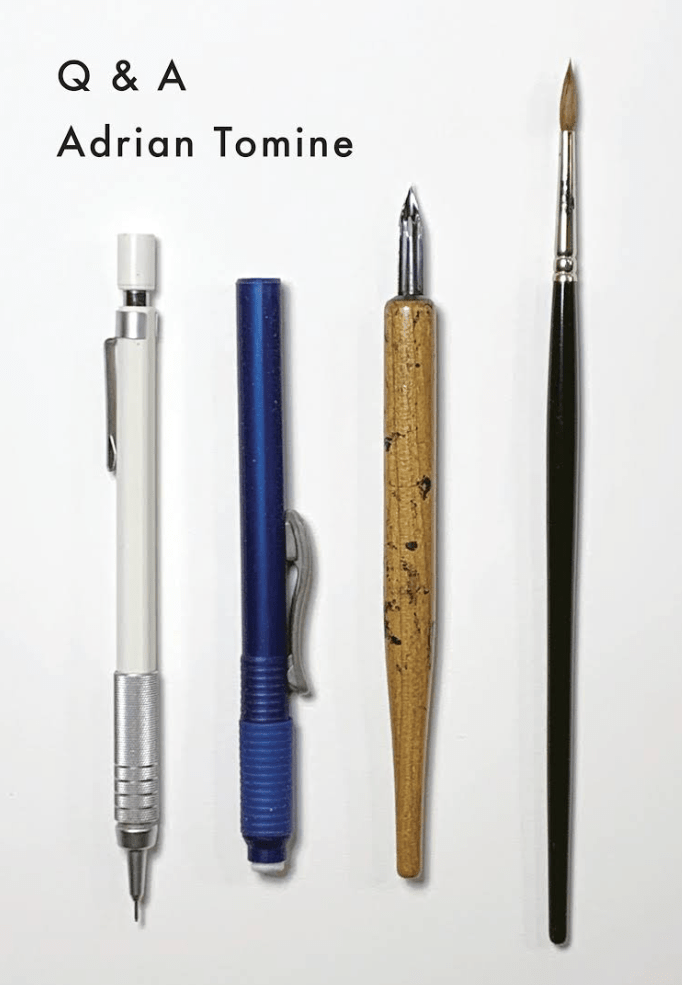
This is a slim volume for a niche audience: aspiring cartoonists and comics fans who are intensely curious about the craft. For that, Berkeley alum Adrian Tomine, creator of the comic book series Optic Nerve, not to mention screenwriter and illustrator of popular New Yorker covers, is an able guide. As the title suggests, Q&A adopts an interview format with Tomine fielding questions sent to him by readers. These range from what pens he uses to ink his sketches to whether he’s ever had a real job and what advice he would give to wannabe cartoonists, illustrators, and screenwriters. His answers are invariably modest and self-effacing, and also gracious. As he writes in the intro, he’s enormously grateful for the human connection that letters from readers have afforded him across the years spent alone in his study, bent over the drafting table. “When I’m honest with myself, it was the reason I started all this in the first place.”
—P.J.
Revolt Against the Sun
Worth Ryder Art Gallery. Exhibit runs through March 7

Every one of Héctor Muñoz-Guzmán’s seven paintings in Flores Para South Berkeley, tells a story. In them, Muñoz-Guzmán MFA ’26 pays homage to where he grew up, in works such as Tiempo Para Pelarnos Pt 3 portraying one of his uncles cutting another’s hair, and Kekodlt, of his cousin wearing a UC Riverside shirt with Muñoz-Guzmán’s previous painting, South Berkeley Guerrero, behind him.
Along with work by Eleni Berg, GG, Kristiana Chan 莊礼恩, Swaleha, and Zuhoor Al Sayegh, these paintings are part of Revolt Against the Sun, the first-year show for the UC Berkeley MFA Art Practice students.
Muñoz-Guzmán went to college after high school, the first one in his family to do so. At the Rhode Island School of Design, he felt isolated and depressed and landed in the hospital. After time in Mexico with family, he came back home, got a job teaching at Creative Growth, and wrote a book, Brown Eyes on Russell Street.
Clutching multiple bouquets of flowers at the opening, Muñoz-Guzmán greeted family and friends who came to support him. He finds being in the UC Berkeley program particularly sweet with Professor Luanne Redeye as a mentor, and for the first time, he has a studio to call his own. In the university that has loomed large in his and his family’s lives, he’s able to continue to explore culture and identity in his work and paint the experiences of working-class people.
—E.W.
The Power of Bridging
By john a. powell

Renowned civil rights scholar john a. powell was only 11 years old when he posed a question that would change the course of his life. Standing before his entire church congregation, he asked: “Brother Manuel, what’s going to happen to the Chinese people?”
A child of Southern sharecroppers, powell was born into the Church of Christ, a religion he devoted himself to unquestioningly. But in books he began to discover a world outside of his all-Black working-class community in Detroit and to doubt a central tenet of his upbringing—that only those baptized in his church would be saved and offered a place in heaven. “What about others, such as the Chinese, who’d never learned of the Christian faith?” he wondered.
When powell turned his back on the church, he also became alienated from his deeply devout family. As he recalls in his latest book, The Power of Bridging: How to Build a World Where We All Belong, “I had gone from profound belonging to a place of a profound other. My place of belonging had not just broken—it had shattered.”
Now a distinguished law professor and the director of the Othering and Belonging Institute at Berkeley, he says that rupture, and the long, painful road to repair, made him who he is today: “a bridger.” And his newest book, which serves as a sort of instruction manual for building cohesion rather than division, endeavors to bring his readers into that mission.
Never has that task been more urgent. In The Power of Bridging, which hits bookstores just a month after the dramatic reelection of former president Donald Trump, powell argues that, facing an increasingly uncertain future, people have the choice to fight each other or fight together.
“The collective anxiety that we are experiencing due to the pace of change in the world today can be met with fear and more anxiety, or it can be met by creating opportunities to turn toward one another and build a larger we that can face the future together,” he writes. “I believe bridging is one such opportunity.”
—L.W.


